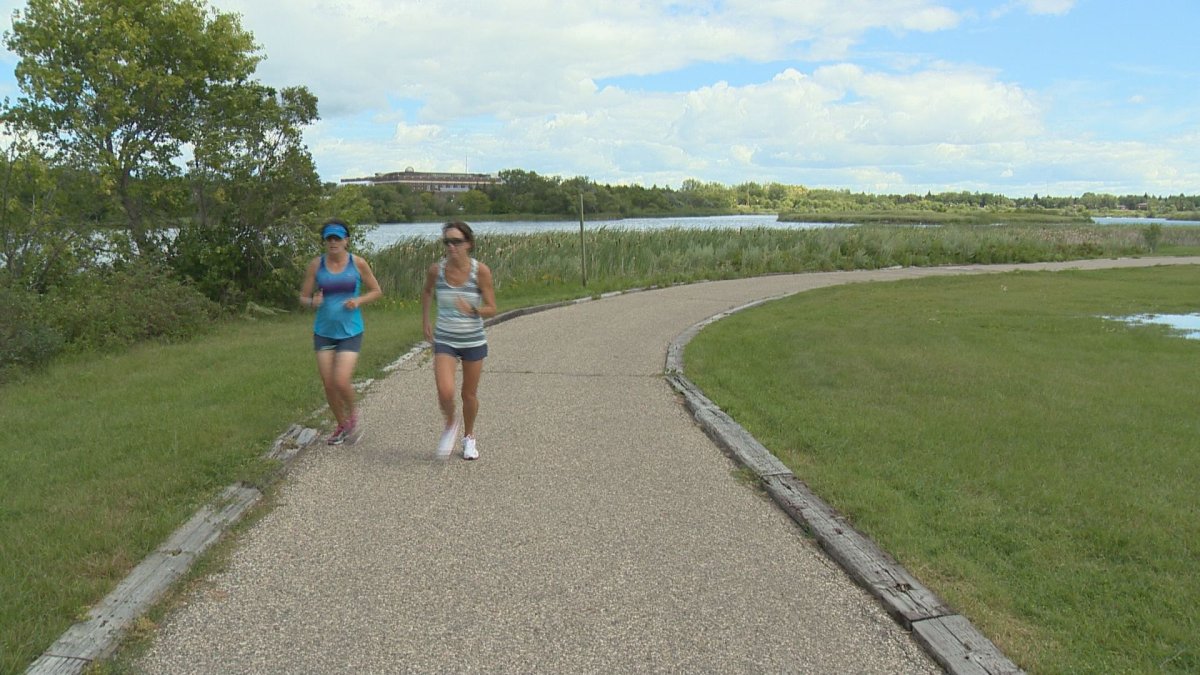The Queen City Marathon (QCM) is only five weeks away. If you’re taking part in the main event, experts say your training needs to be well underway.

Brendan Mackenzie is a running coach for Level 10 Fitness and says whether you’re running the full or the half-marathon on Sept 11th, you should comfortably be able to run 80 per cent of that distance by now.
For half-marathon runners Mackenzie recommends being able to complete the full 21.1 kilometre distance before race day, but says it’s not a necessity.
Now that it’s five weeks before race day, he likes to see clients complete the 16K mark.
If you have signed up for the full marathon, Mackenzie says you also run the risk of over training,
“You should probably really have two or three good quality runs left.”
Mackenzie recommends you should currently have around 26-28K complete in a single run at this point. He prefers to see clients complete the 30-36K mark some time before race day, but certainly not the day or two before.
He also says good posture will help increase training and decrease your chance of injury. Mackenzie says the classic heel-toe stride doesn’t necessarily apply to everyone anymore.
- Canadian man dies during Texas Ironman event. His widow wants answers as to why
- On the ‘frontline’: Toronto-area residents hiring security firms to fight auto theft
- Honda’s $15B Ontario EV plant marks ‘historic day,’ Trudeau says
- Canadians more likely to eat food past best-before date. What are the risks?
“It doesn’t matter if you stick a little bit more on your heel or a little bit more on your toes or if you’re a mid-foot striker, but the key is, relative to your hips, we want to be landing under neither our hips, and not way out in front of the body,” Mackenzie said.
“The key when people land is that they are not decelerating their body.”
Pace teams are always present on race day. Knowing your estimated completion time, based off of your average minutes per kilometre will allow you to choose a pace team. Each pace team has a leader which keeps their runners on specific timing. Setting and keeping a pace is key, because it is said by some that running is 75 per cent mental and 25 per cent physical.
“It’s something that your body can continuously do, but once your brain says I don’t want to go any further, your body pretty much just jumps all in on that,” Shawn Weimer, QCM Race Director says.
LG Fitness knows running too, the Regina based studio will be hosting the official warm-up and cool-down on race day. Owner and trainer Leslie Genoway say’s you should never stretch cold muscles, but after a run stretching is key to recovery.
“We find that most injuries that are acquired by runners come from the lack of stretching, mobility or flexibility,” Genoway says.
Running is a very lateral, repetitive movement and stretching out joints and muscles like your hip flexor can decrease injury and increase mobility.
If you are running on the road on a hot summer day, keeping properly hydrated is very important. Genoway says you need to consume your recommended daily intake of two liters of water and more, no matter when or where you are running.
“Your minimum suggestion is two liters of water, that’s the minimum. That’s not for somebody who is doing above and beyond exercise.”
Always remember to stay safe and on the sidewalk or marked trail if possible.
If you must be on a road that does not have sidewalks, Regina police tell Global News there is no official side of the road which they would call safe, because all conditions require assessment of terrain, visibility and sunlight.
Mackenzie however, suggests running opposite of traffic, and as far away from the road as possible, that way the runner and the driver can see each other.


Comments